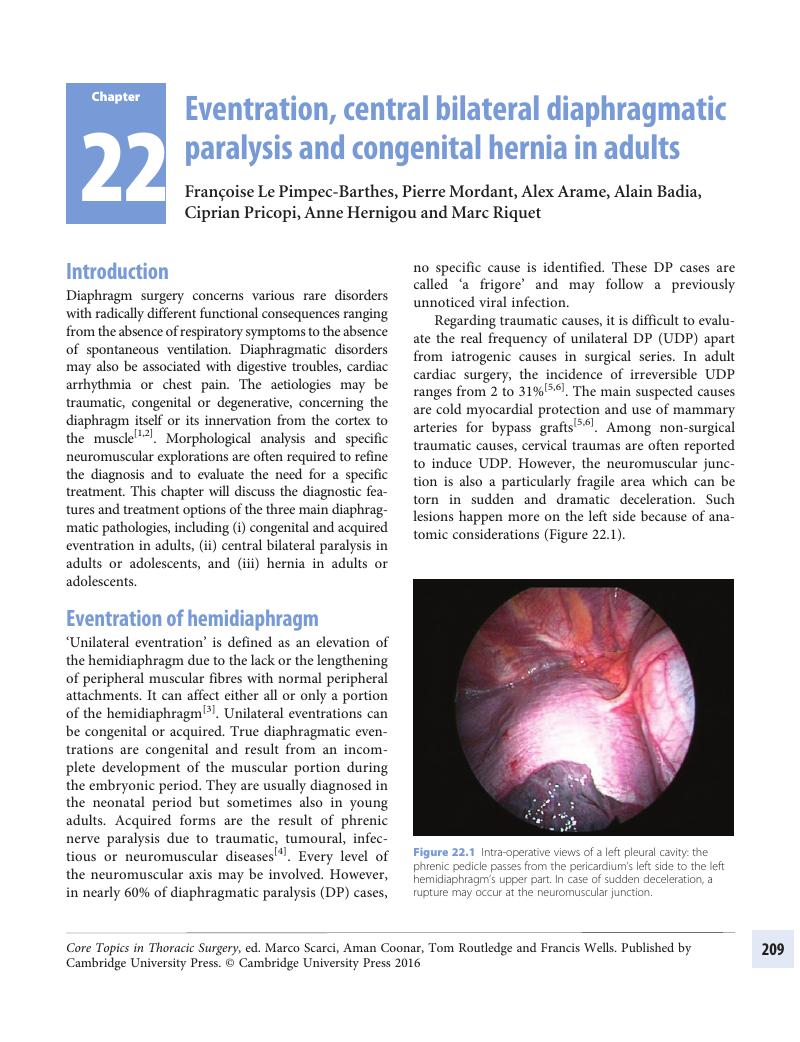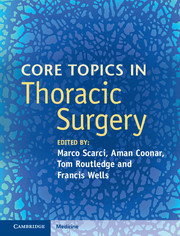Book contents
- Frontmatter
- Contents
- List of contributors
- Section I Diagnostic work-up of the thoracic surgery patient
- Section II Upper airway
- Section III Benign conditions of the lung
- Section IV Malignant conditions of the lung
- Section V Diseases of the pleura
- Section VI Diseases of the chest wall and diaphragm
- 21 Surgery for pectus and other congenital chest wall disorders
- 22 Eventration, central bilateral diaphragmatic paralysis and congenital hernia in adults
- Section VII Disorders of the esophagus
- Section VIII Other topics
- Index
- References
22 - Eventration, central bilateral diaphragmatic paralysis and congenital hernia in adults
from Section VI - Diseases of the chest wall and diaphragm
Published online by Cambridge University Press: 05 September 2016
- Frontmatter
- Contents
- List of contributors
- Section I Diagnostic work-up of the thoracic surgery patient
- Section II Upper airway
- Section III Benign conditions of the lung
- Section IV Malignant conditions of the lung
- Section V Diseases of the pleura
- Section VI Diseases of the chest wall and diaphragm
- 21 Surgery for pectus and other congenital chest wall disorders
- 22 Eventration, central bilateral diaphragmatic paralysis and congenital hernia in adults
- Section VII Disorders of the esophagus
- Section VIII Other topics
- Index
- References
Summary

- Type
- Chapter
- Information
- Core Topics in Thoracic Surgery , pp. 209 - 220Publisher: Cambridge University PressPrint publication year: 2016



